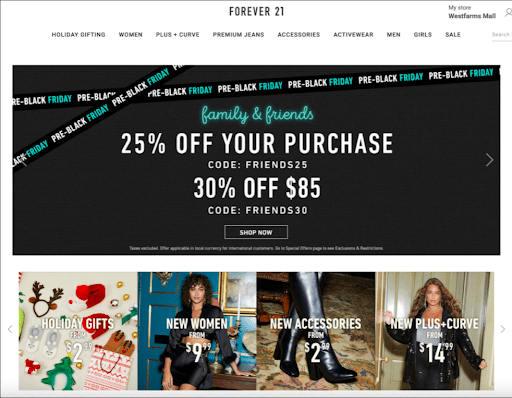
The entrepreneurial spirit is what many small to mid-sized businesses (SMB) personify – a special kind of passion that helps drive the economy forward. However, in a competitive landscape filled with retail giants, it can feel overwhelming to stay on top of the food chain. Many small businesses have felt the pressures of the “Cookiepocalypse”, which has made it harder to obtain data on their consumers, hindering their ability to properly target their audience during the most important retail time of the year. In contrast, larger corporations often have more access to resources – and funds – to strengthen their marketing efforts, which makes it imperative for smaller businesses to implement the most rewarding, yet cost-effective strategies to propel their business forward.
With the holiday season approaching, businesses are getting their holiday marketing campaigns ready to launch. And as our gift to you this season, we have some holiday marketing tips that should be on every SMB’s wish list.
SMB Holiday Marketing Wish List
1. Seasonal keyword research:
Keyword research is a cornerstone of organic and paid search efforts. Since the search engine results page (SERP) landscape constantly changes, it’s always important to stay on top of optimizations. Optimize your product pages with keywords surrounding your holiday sales, like Black Friday. If you know that certain products perform well around the holidays, you’ll want to make sure those product pages are optimized to compete with other search results.
It’s also important to make sure you have a robust local SEO strategy to stay ahead of the holiday traffic. Check out this blog by our very own content and SEO wizard, Jenny Haskins, on local SEO strategies for SMB.
2. Communicate a sense of urgency with holiday shoppers:
Supply chain issues are creating a sense of urgency for consumers to get ahead of their holiday shopping. Make sure that you are communicating with your customers about this. Trust is an important factor for any successful business, but communication can tend to get lost when too many cooks are in the kitchen. You’ll want to be candid with your customers and make sure they understand that supply may be limited. Consider using retargeting strategies to communicate that there is more of an urgency to complete your purchase while you can.
“With supply chain issues prevalent in the marketplace for many products and services, there’s an opportunity to enhance the relationship businesses have with their customers,” said Rebel’s Vice President of Marketing Strategy, Craig Wilson, “It’s a moment to share your expertise, empathize with their concerns and provide constructive advice on how to prepare for the holiday season.”
Wilson says that when businesses communicate about their care and concern for customers and their needs, and less about what it is that they are selling, trust builds in the relationship and develops brand loyalty. With products and services fulfilled, your customers will keep coming back.
3. Leverage your social media profiles:
Social media is a necessary tool for marketing. You will want to be where your consumers are, and be in tune with other platforms they may be shopping on besides your website. Strengthen your off-site strategies by making sure the content on your social media profiles is in tune with the rest of your marketing efforts. Produce some holiday-specific content to share on your social media platforms and utilize hashtags and product tags to get your content seen. Make sure that you are also using your platforms to communicate with your customers. Encourage engagement by actively responding to consumer questions and reviews. Make sure you are delivering important information where they will see it— include your latest sales, events, and products in your social media strategy. But, remember to not make it totally about business. Social media is a great tool to cultivate your customer care initiatives. Your customers will appreciate that you are meeting their needs by delivering relevant and important content where they are active.
4. Optimize your landing pages and use strong calls to action:
Landing pages are where users land when they find you in search results. Landing pages can often be the first impression users get of your website, so it’s important that you establish a clear path for a user to complete a conversion. Having strong calls to action, and creating a sense of urgency, is a great tactic to get users to complete a purchase–especially around the gift shopping season. Audrey Brown, a User Experience expert at Rebel, says that making sales visually prominent to users is important. “Data indicates that roughly half of your online visitors will only make a purchase if they’re getting a good deal. With that in mind, you want to ensure that your website design prioritizes this information in a tasteful, yet unavoidable way. Strong contrast coupled with a large dedicated section makes it hard for the user to miss the current sales.”

5. Make sure your User Experience (UX) is up to par:
The holiday traffic can be intense on your website. During the holiday season, it’s likely that you will receive more visitors than usual, especially if you are e-commerce focused. UX is an incredibly important factor for your website to make sure that users have a quality experience and are able to find what they are looking for with ease.
“Perhaps one of the biggest missed opportunities for e-commerce is guiding the user through your inventory,” said Brown. “Assume they are unfamiliar with your products and create visually engaging clickable sections on your homepage and inventory page to encourage the user to select from products or categories that they may have never even known existed. The example below shows how this subtle detail can boost sales and help the user find exactly what they’re looking for,” she said.

6. Create or refresh holiday site content
If you published an article surrounding the holidays a couple of years ago, it may be good to refresh that content. Utilize the longevity and authority of the existing content to point users to your newest products or holiday landing pages. While it’s always good to create more evergreen content, seasonal content may also prove beneficial for your business. Launch a blog topic strategy to start creating content that highlights some of your seasonal products and services. Utilize this content space to lead users to a specific product or landing page.
7. Launch a holiday email marketing campaign:
Email marketing is an effective way to communicate your holiday messaging and deals. Creating personalized and meaningful emails with direct calls to action is the perfect way to drive users to your site to complete conversions. Take advantage of easy-to-use email marketing platforms like MailChimp to automate your efforts and communicate with your consumers. Pushing “abandoned cart” campaigns around the holiday season is a great way to re-engage users who have visited your site, and put an item in their cart to complete a conversion.
“The holidays, for most, are moments of family, friends, and reflection. We also know that this period is an extremely busy time of the year that can be stressful to balance one’s life, work, and yes, shopping,” said Wilson. “For that reason, it is critically important to have a holiday strategy in place using the most direct means to communicate to your audience, social media, and email marketing, in an effective way.” Wilson encourages businesses to remind prospects and customers of the value they deliver with their products and services. Advise them of gift ideas for those on their shopping list, how and when to purchase items when it’s most convenient for them, and why those receiving products or services will be glad they received such a thoughtful gift. “By doing your customers’ gift-giving thinking for them, they will have one less thing to think about—except how thoughtful and helpful you have been,” said Wilson.

Time to send your list to the North Pole! Good thing Rebel is Santa’s newest reindeer. We’ll help guide you to slay your holiday marketing strategies. Contact us today and see how we can help provide cutting-edge marketing strategies to propel your business forward.